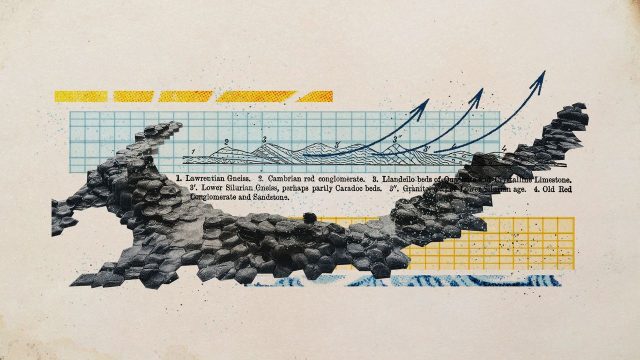
What if cropdusting could cool down the climate? What about rockdusting? Turns out sprinkling rock dust on fields may enhance a process called rock weathering, capable of trapping and removing atmospheric carbon. While the method would be low-cost, there is little data on how much carbon can truly be offset through the process.
Drop it like it’s hot
Rock weathering is a natural carbon removal process that occurs when “rain falls through the atmosphere” and “combines with CO2 to form carbonic acid,” said Undo, a London-based business dedicated to carbon removal. When the acid falls on the landscape, the “CO2 interacts with rocks and soil, mineralizes and is safely stored in solid carbonate form.” Scientists want to supercharge this process in a system called enhanced rock weathering.
The process of rock weathering can be enhanced when rocks are “crushed into a fine dust over land where soybeans, sugar cane and other crops are grown,” said The Washington Post. Then, as it rains, “chemical reactions pull carbon from the air and convert it into bicarbonate ions that eventually wash into the ocean, where the carbon remains stored.” As an added benefit, these carbonates are minerals that “help farmers by replenishing depleted soils,” said the World Economic Forum.
The method has the potential to sequester billions of tons of carbon and slow climate change. “Not too many people have the opportunity to change the temperature of the planet,” Shawn Benner, a hydrogeologist and geochemist at Terradot, a company working on expanding enhanced rock weathering, said to the Post. While covering fields in rock dust is relatively inexpensive, the main difficulty lies in the “logistics of transporting and spreading the rock dust,” said the World Economic Forum. This obstacle “could be overcome by using local sources of rock dust and developing efficient spreading methods.”
Carbon questions
Reducing emissions and moving toward renewable energy is no longer enough to curb climate change. Unfortunately, as countries “fall woefully short of their emissions reduction targets,” there has been a “growing consensus that large-scale carbon removal will be necessary to avoid some of the worst effects of climate change,” said the Post. As a result, methods like enhanced rock weathering are coming to the forefront. However, like with other carbon removal methods, there are “concerns persisting over the efficacy of its verification procedures and ultimately how much carbon it can effectively remove,” said Data Center Dynamics.
Companies working on enhanced rock weathering have “drawn some skepticism from researchers who say they want to see data and peer-reviewed research,” said the Post. There are still questions as to the accuracy of the estimated amount of carbon being removed through this process, especially long-term. Conditions, including the type of rock dust, the type of soil and overall climate, can affect the amount of carbon removal as well. Companies are “experimenting with various silicate rocks, including basalt, wollastonite, olivine and crushed concrete, which differ in terms of weathering rates,” said Data Center Dynamics.
“It’s at an exciting juncture,” David Beerling, the director of the University of Sheffield’s Leverhulme Center for Climate Change Mitigation, said to the Post. “But there’s a need for caution in ensuring that we have rigorous, cost-effective [tracking and verification] so that people don’t make claims for carbon credits that aren’t substantiated.”
Rock dust could trap atmospheric carbon




